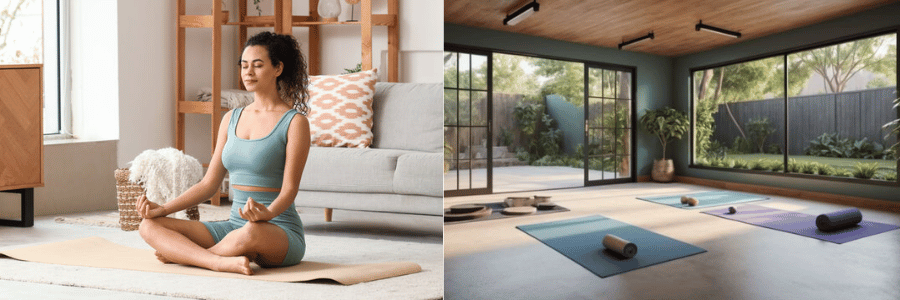A well-designed yoga and meditation space is a sanctuary where you can retreat from the chaos of daily life and reconnect with your inner self. The right windows play a crucial role in creating an atmosphere of calm and focus, letting in natural light, fresh air, and the beauty of the outside world. Here’s how to choose the perfect windows for your yoga and meditation spaces, ensuring a serene and inspiring environment.

Maximizing Natural Light
Natural light is a key element in creating a peaceful yoga and meditation space. It enhances mood, boosts energy levels, and helps create a connection with nature.
Large Windows:
- Floor-to-ceiling windows: These windows allow maximum light to flood into the room, creating an open and airy feel. They also offer unobstructed views of the outdoors, which can be calming and grounding during your practice.
- Bay and bow windows: These window styles extend outward, creating a cozy nook where you can meditate while surrounded by light and nature.
Light-filtering Glass:
- Frosted or textured glass: These options diffuse harsh sunlight, providing a soft, even glow that is gentle on the eyes and conducive to relaxation.
- Low-E glass: This type of glass reduces glare while maintaining clear views, ensuring that your space remains bright without being overwhelming.
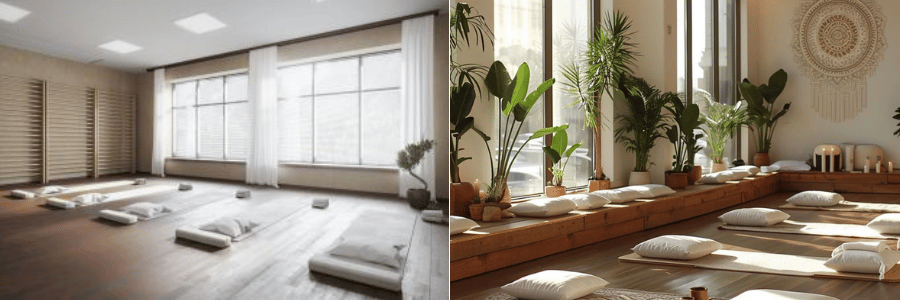
Enhancing Ventilation
Proper ventilation is essential for a yoga and meditation space to ensure fresh air circulation, which can help clear the mind and improve overall well-being.
Operable Windows:
- Casement and awning windows: These windows open fully, allowing for excellent ventilation and the ability to control airflow. Casement windows, which open outward like a door, can capture breezes, while awning windows, which hinge at the top, can stay open even during light rain.
- Sliding windows: These are easy to operate and provide ample ventilation without taking up interior space, making them ideal for smaller rooms.
Ventilation Systems:
- Transom windows: Placed above eye level, transom windows can be used to vent hot air out of the room without compromising privacy or wall space.
- Tilt-and-turn windows: These versatile windows can tilt inward at the top for gentle ventilation or swing open like a door for maximum airflow, offering flexibility to suit different weather conditions and preferences.
Creating a Connection with Nature
Incorporating elements of nature into your yoga and meditation space can enhance the sense of tranquility and help you feel more grounded.
Picture Windows:
- Framing views: Large, fixed picture windows can frame beautiful outdoor scenes, such as gardens, trees, or water features, providing a constant source of inspiration and calm.
- Natural landscapes: Position your windows to capture the most serene and uplifting views, whether it’s a lush garden, a serene forest, or a calming body of water.
Biophilic Design:
- Greenery and natural materials: Use windows to bring in the beauty of the outdoors. Consider placing plants near windows to create a seamless indoor-outdoor connection, or choose window frames made from natural materials like wood to enhance the organic feel of the space.
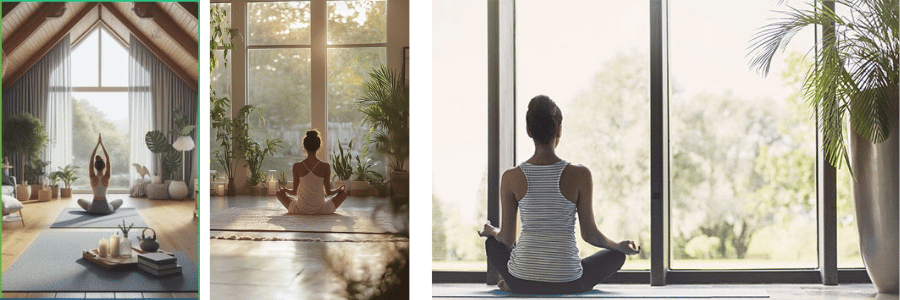
Ensuring Privacy and Comfort
Privacy is vital in a yoga and meditation space to allow for uninterrupted focus and relaxation. The right window treatments can provide both privacy and comfort.
Window Treatments:
- Sheer curtains: These provide privacy while still allowing natural light to filter through, creating a soft, tranquil ambiance.
- Blinds and shades: Choose adjustable options that let you control the amount of light and privacy, such as bamboo blinds or cellular shades. These materials also add a natural touch to the decor.
Soundproofing:
- Acoustic windows: If your yoga and meditation space is near a busy street or noisy area, consider installing acoustic windows that reduce outside noise, creating a more peaceful and focused environment.
- Drapes and curtains: Heavy, insulated drapes can also help dampen sound while adding a cozy, calming feel to the space.
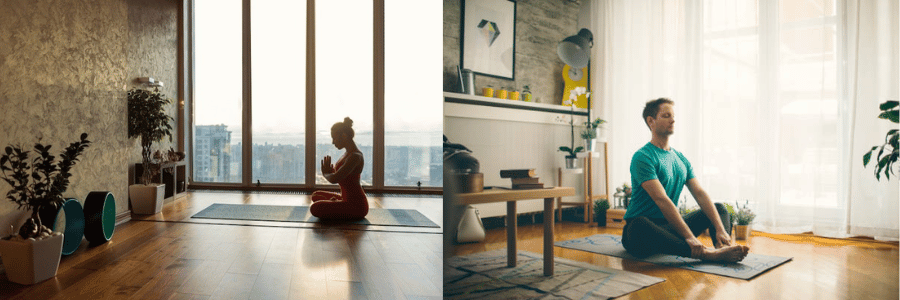
Personalizing Your Space
Every yoga and meditation space should reflect your personal style and preferences, creating an environment where you feel comfortable and inspired.
Custom Windows:
- Unique shapes and designs: Consider custom-shaped windows, such as arched or circular designs, to add a unique and personal touch to your space. These can serve as focal points and enhance the overall aesthetic.
- Stained glass: Incorporate stained glass windows to add color and artistic flair. The light filtering through the stained glass can create a beautiful, serene atmosphere that enhances your practice.
Decorative Elements:
- Window seats and cushions: Create a cozy spot for meditation by adding a window seat with comfortable cushions. This can be a perfect place to sit and reflect while enjoying the view outside.
- Hanging plants and crystals: Enhance your windows with hanging plants, crystals, or other decorative elements that resonate with your personal style and contribute to the peaceful ambiance.
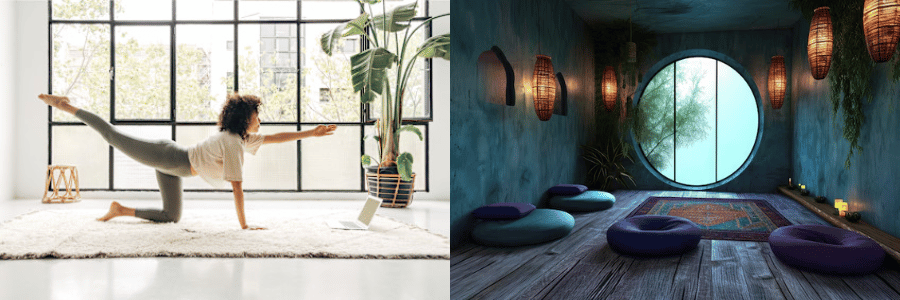
Conclusion
Choosing the right windows for your yoga and meditation spaces can significantly impact the atmosphere and effectiveness of your practice. By maximizing natural light, enhancing ventilation, creating a connection with nature, ensuring privacy, and personalizing your space, you can create a sanctuary that promotes calm and focus. Invest in windows that not only meet your practical needs but also enhance the beauty and serenity of your environment. With thoughtful design and attention to detail, your yoga and meditation space can become a true haven of tranquility and inspiration.

